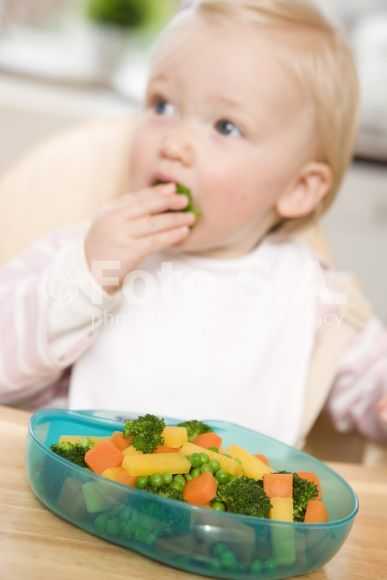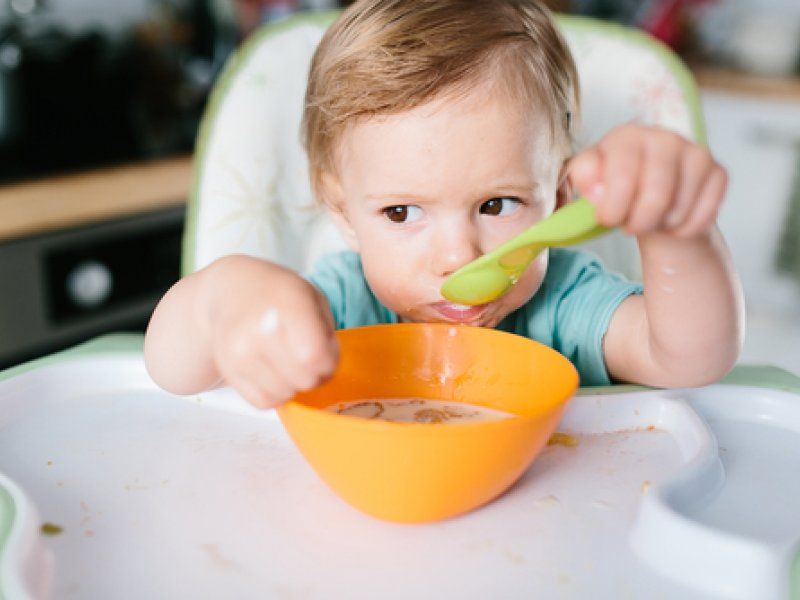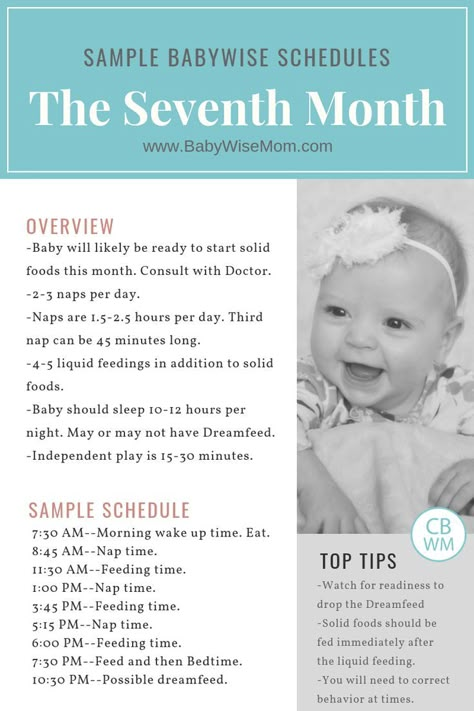Baby food without citric acid
Sprout Foods Becomes 1st Baby Food with No Acid Preservatives
Premium Organic Brand Changes Manufacturing Process to Protect Young Digestive Systems, Expanding Commitment to Using No Preservatives, Concentrates or Other Additives
News provided by
Sprout Foods
Mar 06, 2015, 10:02 ET
ANAHEIM, Calif., March 6, 2015 /PRNewswire/ -- Organic food company Sprout Foods announced today that it has adopted a unique ingredient sourcing and manufacturing strategy that eliminates the need for acid preservatives such as citric acid, ascorbic acid or lemon juice concentrate that can cause acid reflux and rashes in babies. Sprout now supplies the only comprehensive line of baby and toddler foods with no acidifiers, adding a new level of purity to a product portfolio that is already completely organic and free of GMOs, preservatives, artificial colors and flavors, and other additives.
"Many pediatricians recommend against feeding acid preservatives to infants because they can upset the baby's stomach, cause diaper rash on the bottom or the mouth, and potentially harm tooth enamel. But acidic additives are required in conventional hot fill manufacturing processes to prevent the growth of bacteria and produce a shelf-stable product," said Geoff Stella, Sprout VP of Marketing. "Our use of acid-free ingredients, cooking technique and associated packaging changes have required an extra investment, but enabled us to prevent acid-related issues like stomach upset that every parent wants to avoid."
The change applies across Sprout's entire product line, which includes 45 products for babies, toddlers and young children. Choices range from single fruit and veggie purees for infants to healthy combinations like Pear Oatmeal with Maple & Carrot, Creamy Vegetables with Chicken, and Strawberry, Pear & Butternut Squash with Amaranth. All products come in flexible 'squeeze' packages for easy portability and self-feeding.
The new acid-free formulations mark the latest implementation of the three core values – real, honest and pure – on which the company has built its business since the first Sprout baby foods appeared on store shelves in 2009.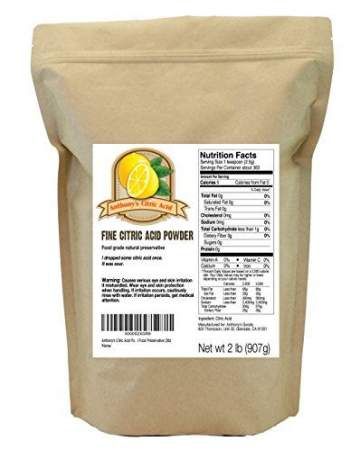 All Sprout foods are:
All Sprout foods are:
- Real –No concentrates are used for sweetening or other purposes. All Sprout meals and snacks are made exclusively from whole fruits, vegetables, grains, poultry and beef, so children get all fiber, protein, vitamins and other nutrients from the real thing.
- Honest – Unlike brands that highlight appealing ingredients like raspberries in their product names even if there is only a trace of raspberry or raspberry flavoring in them, Sprout's product names precisely match the top three or four ingredients in the package in descending order. If the first word in the product is "Apricot," then apricot is the #1 ingredient.
- Pure – In addition to being organic and GMO-free, Sprout is the only brand that is unadulterated by sugar, salt, preservatives, acids, artificial colors or flavors, or thickeners like guar gum.
"Parents don't want to cut corners when it comes to their kids, and that's why we don't," Stella said. "Our products are the closest thing to homemade that you can get on a grocery shelf."
"Our products are the closest thing to homemade that you can get on a grocery shelf."
Sprout Foods is exhibiting at Booth #5575 at the Natural Products Expo West trade show that opens today in Anaheim.
About Sprout Foods
Sprout Foods, Inc. provides premium organic foods for babies, toddlers and their families that encourage happy and healthy eating. Founded in 2009, Sprout uses only organic and GMO-free ingredients and unique cooking methods to create tasty, nutritious combinations that appeal to all ages. For more information, visit: http://www.sproutorganicfoods.com.
SOURCE Sprout Foods
Related Links
http://www.sproutorganicfoods.com
Organic Baby Food - What You Need To Know About It
This post contains affiliated links. Please read my disclosure page.
Reasons to Go Organic Baby Food instead of Non-Organic Baby Food
Non-organic baby food contains vegetables & fruits with chemical pesticides and meats with antibiotics or growth hormones. There are also preservatives, starchy fillers, thickening agents, artificial flavors or colors. Organic baby food can minimize your baby’s exposures to these dangerous chemicals. Organic labels have to meet strict government standards and regulations for their organic food. All organic baby food listed below have a USDA certified organic label. USDA certified means the manufacturer has to use at least 95% organic ingredients. USDA looks at how those organic food is grown, processed, packaged and shipped. When food is grown, processed, packaged and shipped, no synthetic pesticides, petroleum-based fertilizers, synthetic growth hormones, artificial colors, flavors or preservatives, No GMOs or ionizing radiation should be used. For meats, poultry and dairy products, no antibiotics or hormones are allowed. Also, the animals have to be fed only organic, vegetarian feed and live in an appropriate housing and conditions which doesn’t jeopardize animals’ health, safety, or well-being.
There are also preservatives, starchy fillers, thickening agents, artificial flavors or colors. Organic baby food can minimize your baby’s exposures to these dangerous chemicals. Organic labels have to meet strict government standards and regulations for their organic food. All organic baby food listed below have a USDA certified organic label. USDA certified means the manufacturer has to use at least 95% organic ingredients. USDA looks at how those organic food is grown, processed, packaged and shipped. When food is grown, processed, packaged and shipped, no synthetic pesticides, petroleum-based fertilizers, synthetic growth hormones, artificial colors, flavors or preservatives, No GMOs or ionizing radiation should be used. For meats, poultry and dairy products, no antibiotics or hormones are allowed. Also, the animals have to be fed only organic, vegetarian feed and live in an appropriate housing and conditions which doesn’t jeopardize animals’ health, safety, or well-being.
Additives/ Preservatives in Organic Baby Food
So organic baby food uses at least 95% organic ingredients, then what is in that 5%? Some of the organic baby food use preservatives. Commonly used preservatives are Ascorbic acid (Vitamin C), Citric acid, or Lemon juice concentrate. They are mostly used with fruit or vegetable and fruit mix purees. Bacteria can’t grow in acidic environment so many food companies use ascorbic acid, citric asid or lemon juice concentrate as a preservative. Citric acid is also used by many drink or food companies to enhance citric flavor. So what are they? Let’s take a look.
Ascorbic Acid (Vitamin C) – Ascorbic acid is synthetic vitamin C. It is usually synthesized from GMO corn.
Citric Acid – Getting citric acid from natural fruit is not economical so most of the time citric acid is chemically produced with the mold, Aspergillus niger.
Lemon Juice Concentrate – To make lemon juice concentrate, water is removed from lemon and dried up to make powder.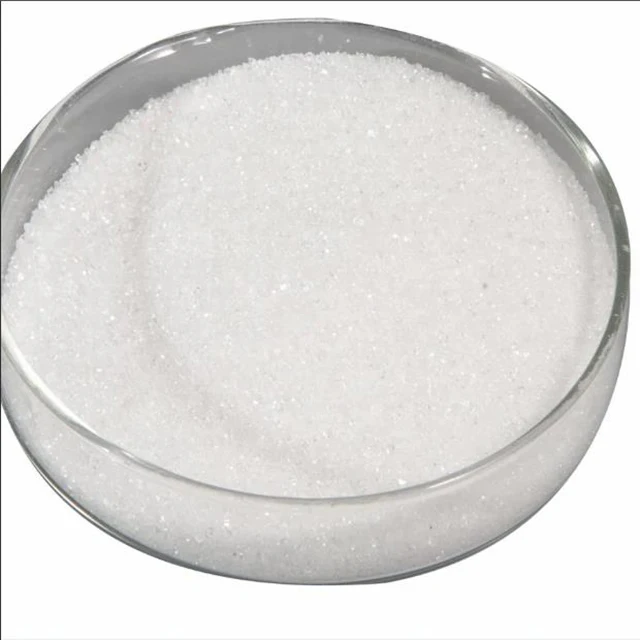 This powder is called concentrate. Removing water concentrates the natural sugar more, and makes a lemon
This powder is called concentrate. Removing water concentrates the natural sugar more, and makes a lemon
juice concentrate very sweet. If the lemon used is not organic, it will have pesticides.
Health Effect from Ascorbic Acid, Citric Acid or Lemon Juice Concentrate
Dr. Jamie Koufman and Dr. Jordan Stern, authors of The Reflux Diet Cookbook found that acid preservatives in baby food can cause reflux in babies. (read more here.) Added acid increases acidity in baby’s food and it can upset the baby’s stomach. If the baby food already has an acidic fruit such as an apple in it, the food will become more acidic by an added acid preservative. Many pediatricians suggest that babies with reflux avoid acidic food. The authors of the book also said that having acidic food sometimes is okay but it shouldn’t be a regular diet for the baby. In addition, acidic foods such as citrus fruits are not recommended for babies under 12 months because their stomach can not handle them well. As you would see in author’s finds, not all baby food with acid preservatives, is highly acidic (a PH of greater than 5 should be fed to babies.), however, some of them are. Therefore, if you have a baby with reflux or just want to avoid acidic food, get the baby food without acid preservatives or select the one with an ingredient that is not acidic.
As you would see in author’s finds, not all baby food with acid preservatives, is highly acidic (a PH of greater than 5 should be fed to babies.), however, some of them are. Therefore, if you have a baby with reflux or just want to avoid acidic food, get the baby food without acid preservatives or select the one with an ingredient that is not acidic.
Homemade Baby Food VS Store Bought Baby Food
Food has to be cooked in a very high temperature to have a long shelf life (usually about 2 years) for the store bought baby food. This process of cooking is to ensure food is not contaminated and is sterilized so that it can be preserved for a long time. However, in this process, many nutrients are killed. For non-organic baby food, often starchy fillers, thickening agents, artificial flavors, artificial colors or artificial preservatives are added to the baby food. After all this process, baby food will have very little nutrients compared to homemade baby food.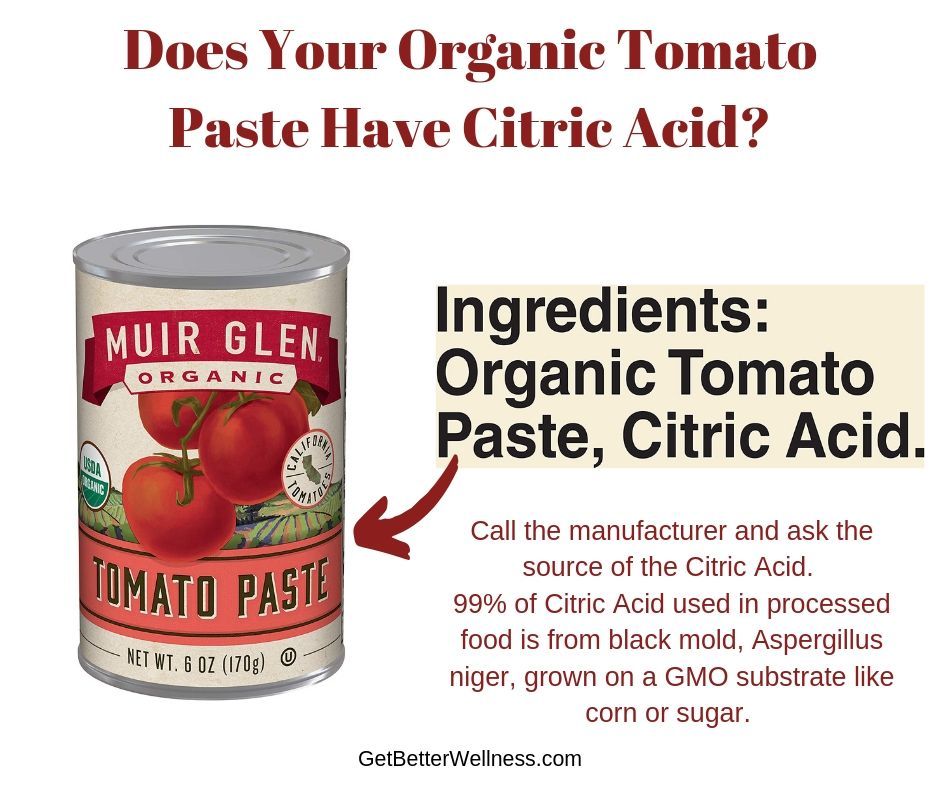 Organic brands don’t use starchy fillers, thickening agents, artificial flavors , artificial colors or artificial preservatives so it is much better than non-organic baby food. However, it still has to be cooked at very high temperature so the nutrients will be less than your homemade baby food. Homemade food is more fresh, more nutritious and you know exactly what goes into the food so making your own baby food will be the best.
Organic brands don’t use starchy fillers, thickening agents, artificial flavors , artificial colors or artificial preservatives so it is much better than non-organic baby food. However, it still has to be cooked at very high temperature so the nutrients will be less than your homemade baby food. Homemade food is more fresh, more nutritious and you know exactly what goes into the food so making your own baby food will be the best.
On the other hand, store bought baby food is very convenient. They often come in a jar or a pouch. You can put only the amount of food that you are going to feed your baby in a bowl and you can just store the rest of it in the fridge. (in the same jar or pouch). Baby can also self-feed with the pouch. It is also ready-to-eat food so you do not need to cook, defrost or warm which is a lot less work. I personally cooked my own baby food a lot. However, I also used a lot of commercial organic baby food too when I got too busy or when I needed food right away but didn’t have food prepared.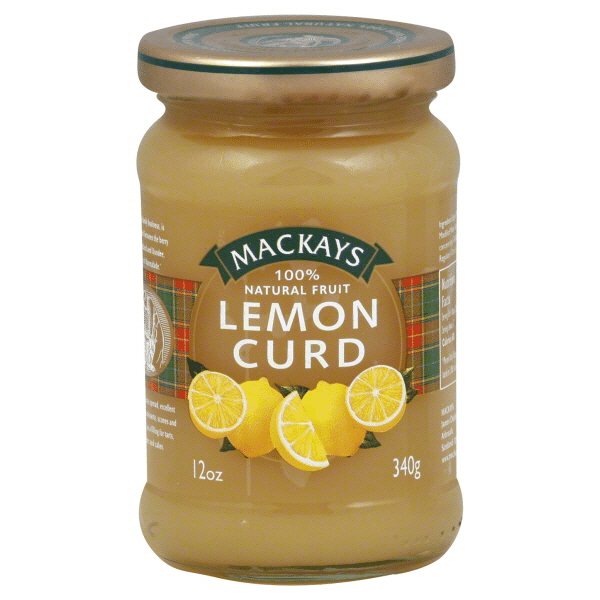 Store bought baby food also came in very handy when I went to places with my baby. I didn’t have to worry about packing the food, just grabbed one of these pouches and that was it. Also, Stage 2 and Stage 3 organic baby foods have several ingredients in one pouch. (Sweet potato, Pear, Broccoli, Spinach for example) This means, my baby can eat many different ingredients and benefit several nutrients at once without me going shopping for all of these ingredients. Store bought baby food did save time for me. Also, baby sometimes doesn’t like to eat a certain vegetable or meat (spinach for example) because she doesn’t like the taste of it. In this case, you can try to offer a pouch with that particular vegetable or meat mixed with other ingredients. (spinach, raspberry and yogurt for example) She may like the taste and not notice that vegetable (spinach) in the food. Store bought baby food is very convenient, however, it is more expensive than homemade baby food.
Store bought baby food also came in very handy when I went to places with my baby. I didn’t have to worry about packing the food, just grabbed one of these pouches and that was it. Also, Stage 2 and Stage 3 organic baby foods have several ingredients in one pouch. (Sweet potato, Pear, Broccoli, Spinach for example) This means, my baby can eat many different ingredients and benefit several nutrients at once without me going shopping for all of these ingredients. Store bought baby food did save time for me. Also, baby sometimes doesn’t like to eat a certain vegetable or meat (spinach for example) because she doesn’t like the taste of it. In this case, you can try to offer a pouch with that particular vegetable or meat mixed with other ingredients. (spinach, raspberry and yogurt for example) She may like the taste and not notice that vegetable (spinach) in the food. Store bought baby food is very convenient, however, it is more expensive than homemade baby food.
For the nutritional value, I would pick organic baby foods that have whole organic ingredients than the ones that are pureed ingredients.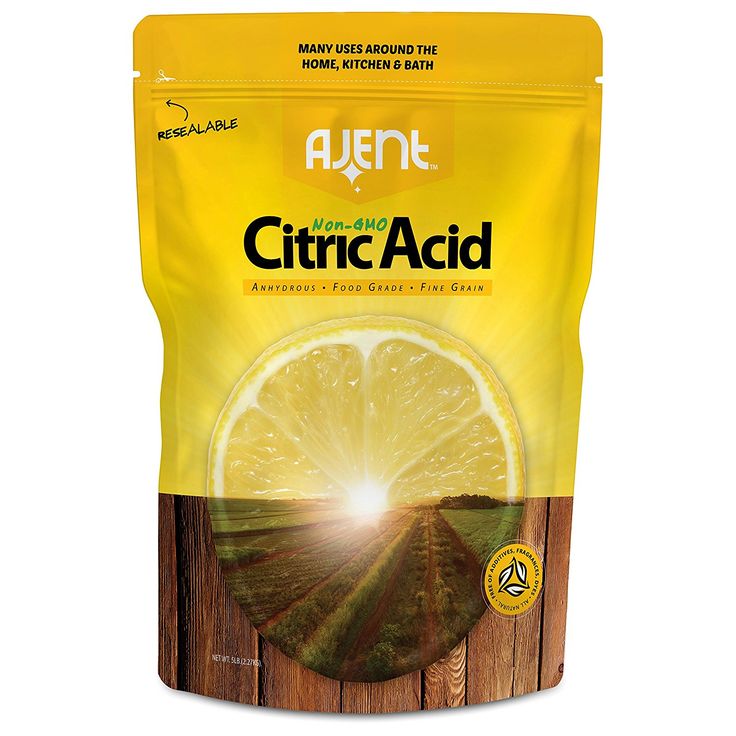 For example, I would select the food that states ‘organic pear’, not ‘organic pear puree’ as an ingredient. I would also look at the first ingredient in the jar or pouch if the first ingredient is water. Unless the dish is supposed to be a soup, you don’t want baby food that is diluted with water. Having whole ingredients or having water as a last ingredient will be more nutritious.
For example, I would select the food that states ‘organic pear’, not ‘organic pear puree’ as an ingredient. I would also look at the first ingredient in the jar or pouch if the first ingredient is water. Unless the dish is supposed to be a soup, you don’t want baby food that is diluted with water. Having whole ingredients or having water as a last ingredient will be more nutritious.
Organic Baby Food That Doesn’t have Ascorbic Acid, Citric Acid or Lemon Concentrate
Sprout Organic Baby Food Pouches
Sprout Organic Baby Food
Sprout Organic Baby food is made with USDA certified organic, non-GMO ingredients and contains no preservatives, concentrates, additives, artificial colors, flavors, added sugar, fillers of any kind or anything artificial. They don’t use lemon juice concentrate, citric acid or ascorbic acid in their ingredients as other organic baby food brands do. In addition, they use actual whole organic ingredients, not pureed organic ingredients.
More Info
Stage 1 Stage 2 Stage 3
Ella’s Kitchen Organic Baby Food Pouches
Ella’s Kitchen Organic Baby Food
Ella’s Kitchen Organic baby food has no GMO, preservatives, thickeners, additives, gluten, wheat, dairy, lactose, lumps or bits, anything artificial, added water, salt or sugar. Their products are Kosher and USDA Organic certified. They use <1% lemon concentrate for fruits and veggies. Ingredients are also whole organic ingredients, not pureed organic ingredients.
Stage 1 Stage 2 Stage 3
More Info
Food additives in baby food: harmless or not? - 10 answers
On BB I often see posts about whether it is worth giving a child this or that puree, because it has been added ... and then there are various nutritional supplements that we, mothers, find on jars of baby food.
Now I am faced with this too. ran out of buckwheat. We ate Heinz, and then the whole area ran around, but Heinz did not. Frutonyanya and Nestle - the choice is small. Well, I bought Nestle and okay (I don’t trust the Frutonians at all). I came, I read on the box: buckwheat flour, vitamins, bifidobacteria and ... here are those on ... emulsifier (soy lecithin). Here, I think, Nestle, adds all sorts of science to the kids. I decided to figure out whether to be afraid of these additives or not. After all, I still have meat purees with starch and banana Gerber with citric acid for the future.
Frutonyanya and Nestle - the choice is small. Well, I bought Nestle and okay (I don’t trust the Frutonians at all). I came, I read on the box: buckwheat flour, vitamins, bifidobacteria and ... here are those on ... emulsifier (soy lecithin). Here, I think, Nestle, adds all sorts of science to the kids. I decided to figure out whether to be afraid of these additives or not. After all, I still have meat purees with starch and banana Gerber with citric acid for the future.
Went through a bunch of articles. Here I provide excerpts from them. If you are interested, you can read. I warn you right away, a lot of letters.
So, here's what I found:
Let's start with soy lecithin.
Does soy lecithin have health benefits? Yes, it has! Lecithin is the most important building block of the peripheral and central nervous systems. So the PNS is 15% lecithin, and the CNS is 30%. Conclusion from This is obvious: for our body it is a very useful substance!
Ono participates in the intrauterine formation of the nervous tissue and brain of the fetus.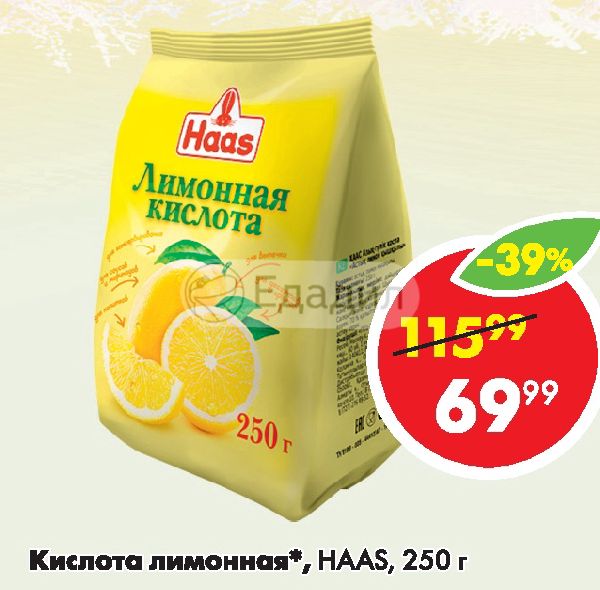 AT in breast milk, the content of lecithin is almost 100 times higher than all of its amount in the body of a woman. This is a good argument for this substance. It is extremely important for the central nervous system, where lecithin is responsible for memory, concentration, thinking, and this is what we are trying to stimulate and develop in their children. The choline contained in it contributes to the development of memory.
AT in breast milk, the content of lecithin is almost 100 times higher than all of its amount in the body of a woman. This is a good argument for this substance. It is extremely important for the central nervous system, where lecithin is responsible for memory, concentration, thinking, and this is what we are trying to stimulate and develop in their children. The choline contained in it contributes to the development of memory.
Important arguments in favor of the safety of soy lecithin for children is its ability to help the absorption of vitamins A, E, D, K, provide normal fat metabolism, stimulate the formation of red blood cells bodies - hemoglobin and erythrocytes. And for a child, vitamins are extremely important, because a lack of vitamin A can lead to a delay in development and growth, vitamin E - to reduce body weight, vitamin D - to the appearance of rickets, vitamin K - to a violation of blood clotting.
The composition of soy lecithin is as follows:
Phospholipids -98%, of which phosphatidylcholine 20-24%, phosphatidylserine 18-22%, also structures of phospholipids contain linoleic and linolenic acids.
Lack of linoleic acid in the body leads to hair loss, deterioration of the skin, and linolenic acid - to growth retardation.
Undoubtedly Soy lecithin is important for the liver, which is 50% made up of it. With his with the help of the transfer of fats from the liver cells and normalization bile consistency.
A healthy person needs 5-7 grams of lecithin daily.
Except In addition, it is part of biological membranes and helps in the production energy, which is extremely important in childhood. Children not a second they cannot hold at rest - they crawl, run, jump, climb, therefore they need nourishment, including soy lecithin.
Now there is a lot of talk about soy, which is strongly associated with GMOs, because with soy is often used in the production of the latter. There are subtleties here. since soy lecithin is made from soybean oil, which is preliminarily very well cleaned and filtered. Science has proven that lecithin vegetable origin is much more effective than the same substance animal origin. And then it says: It is ultimately up to you to decide if soy lecithin in infant formula and other foods is harmful.
And then it says: It is ultimately up to you to decide if soy lecithin in infant formula and other foods is harmful.
I read a couple more articles and again they write that it is not harmful, but vice versa, and the only thing that can alert is that it can be produced from genetically modified raw materials. But there is a caveat that you should not be particularly afraid, since the use of GMOs is strictly regulated (doubts still gnaw).
Next, why is citric acid in baby purees?
Reading: citric acid is a natural preservative, a metabolic participant, synthesized by the body, very rarely causes allergies. It belongs to the team of antioxidants (or antioxidants) and in the course of goes with the goal of extending the shelf life of the product (prevents splitting of fats, vitamins in contact with air).
It is clear that it is in banana puree in order, apparently, to make it pleasantly yellow, and not black.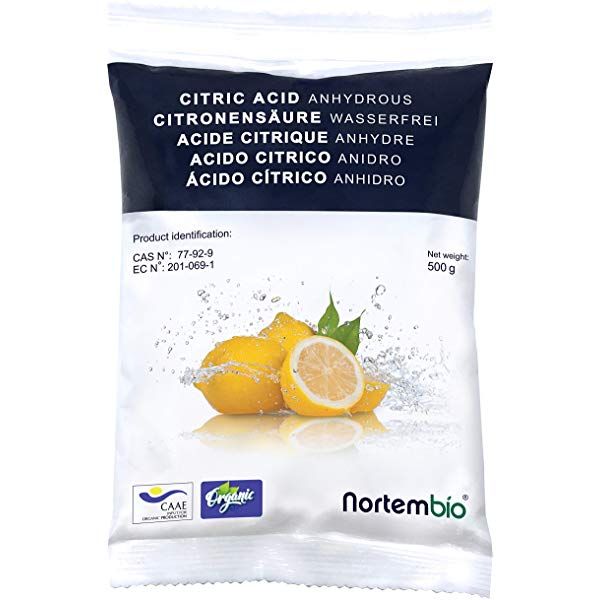 )) And then I read: In accordance with the International Standardization System, this additive refers to crustaceans, although it is allowed for use in food products. Wow! I searched and found this information in more than one place. I think it won’t do any harm in minimal quantities, but it’s better to make banana puree yourself, after all, the child’s health is the main thing. You can’t take risks here.
)) And then I read: In accordance with the International Standardization System, this additive refers to crustaceans, although it is allowed for use in food products. Wow! I searched and found this information in more than one place. I think it won’t do any harm in minimal quantities, but it’s better to make banana puree yourself, after all, the child’s health is the main thing. You can’t take risks here.
And more about citric acid: It has the ability to remove harmful substances from the body. toxic substances, slags and salts, and also contributes to an increase immunity and increases the calcium content in the body, normalizing, thus, the activity of the immune and endocrine systems. Do not despite a number of positive qualities, wrong and uncontrollable the use of citric acid can cause significant damage human health. Thus, excessive consumption of foods containing citric acid, can damage tooth enamel and lead to caries. The consumption of this substance is recommended to be limited and in some diseases of the stomach.
Why starch in meat purees?
Gerber answer: therefore, the technology of its preparation requires the introduction of starch. GERBER® uses the least allergenic and easy to digest corn and rice starch. The starch content in the puree is very low, only 1-4 grams per 100g of the finished product. starch adapts to the characteristics of the immature digestion of babies up to of the year. Therefore, the child usually copes well with such a product.
Excerpts from one article: Misconception #1 - starch is only needed for mashed potatoes and has no useful properties. Rice cereals or rice starch are really added to fruit and less often - vegetable - puree. One of the reasons is the desire of the manufacturer to make puree thicker. But respected brands take these measures not for the sake of saving, but out of a desire to make it easier for the mother to breastfeed. After fruit or a number of vegetables (such as zucchini and cauliflower) are minced to puree states, they release too much water. Adding Starch allows you to bind excess water and get the desired consistency, with which the puree will look more appetizing for the baby and will not drain from the spoon. In addition In addition, it has been proven that starch contributes to better digestibility of fruits. To understand why this happens, you need to understand what is is starch. Starch - a complex carbohydrate-polysaccharide, synthesized in nature by plants under exposure to light. Once in the human body, starch decomposes enzymes (amylases) contained in saliva and intestines, turning into glucose. In turn, glucose contributes to better digestibility various types of sugar found in fruits. In addition, glucose is an important supplier of energy and helps the brain work, which is another argument in favor of adding starch. Rice starch has no taste and smell, without affecting the palatability final product. The presence of starch in baby puree is minimal - usually around 3-6% in each jar. Choosing baby food pay attention to the "BIO" mark on the packaging.
Adding Starch allows you to bind excess water and get the desired consistency, with which the puree will look more appetizing for the baby and will not drain from the spoon. In addition In addition, it has been proven that starch contributes to better digestibility of fruits. To understand why this happens, you need to understand what is is starch. Starch - a complex carbohydrate-polysaccharide, synthesized in nature by plants under exposure to light. Once in the human body, starch decomposes enzymes (amylases) contained in saliva and intestines, turning into glucose. In turn, glucose contributes to better digestibility various types of sugar found in fruits. In addition, glucose is an important supplier of energy and helps the brain work, which is another argument in favor of adding starch. Rice starch has no taste and smell, without affecting the palatability final product. The presence of starch in baby puree is minimal - usually around 3-6% in each jar. Choosing baby food pay attention to the "BIO" mark on the packaging.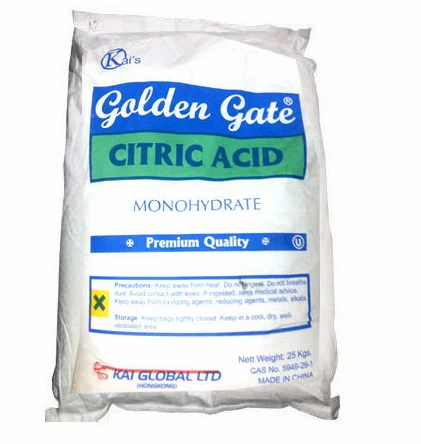 Possibility to name only recognized producers receive their bioorganic products baby food, such as HiPP, which have been approved numerous commissions. This icon is a guarantee that the power for your baby was made exclusively from bio-organic raw materials without the addition of pesticides, nitrates, dyes, GMOs and other harmful substances for the organism.
Possibility to name only recognized producers receive their bioorganic products baby food, such as HiPP, which have been approved numerous commissions. This icon is a guarantee that the power for your baby was made exclusively from bio-organic raw materials without the addition of pesticides, nitrates, dyes, GMOs and other harmful substances for the organism.
Misconception No. 2 - a child cannot digest starch. On the contrary, starch is not only perfectly digested by a child's stomach, but also improves its functioning. Glucose, into which starch is digested, helps the body lighter and faster absorb from the digestive tract into the intestinal cells contained in fruit fructose, thereby reducing the risk of digestive disorders and providing a firming effect. Moreover, starch creates a film in the stomach, protecting it from the effects of aggressive organic acids, contained, for example, in acidic varieties of fruits.
Misconception No.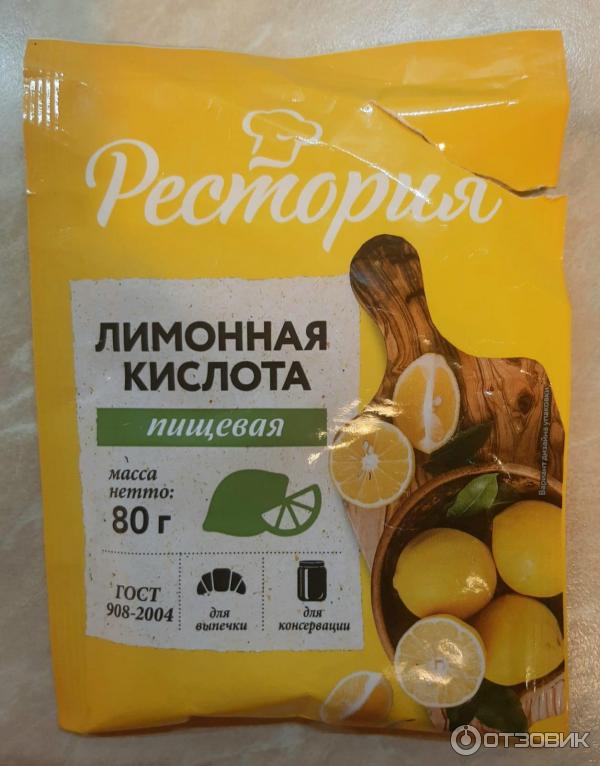 3 - starch puree should not be given to children in the first six months of life. According to studies of scientists, starch is favorably tolerated by newborns, whose body is able to break down glucose from the first weeks of life. Fruit purees with starch can be given to babies from 4 months, as many European mothers do, confident in the need the presence of this ingredient in the diet of their children.
3 - starch puree should not be given to children in the first six months of life. According to studies of scientists, starch is favorably tolerated by newborns, whose body is able to break down glucose from the first weeks of life. Fruit purees with starch can be given to babies from 4 months, as many European mothers do, confident in the need the presence of this ingredient in the diet of their children.
Trust or no starch - the choice is up to the parents. The main thing is to choose products of only those manufacturers who use the global trust and have long established themselves in the market. This will guarantee the fact that only fresh and healthy products will get on the baby’s table, meeting the highest quality standards .
And about modified starch: Modified starch is NOT for GM foods RELATED. "Modified" translates as "changed". Starch change with the help of special processing to get some necessary properties - and destroy some.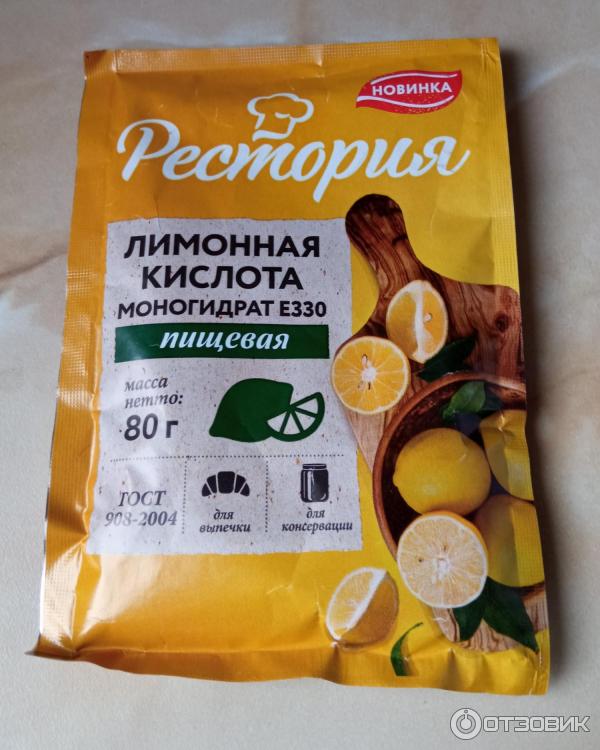 For example, remove odor, enhance swelling, and so on. Despite the safety of the modified starch, potato or corn starch may alert, especially in imported food - just these types of starch are often genetically modified. And again: Although modified starch is allowed in baby food, it is not recommended for children under one year of age.
For example, remove odor, enhance swelling, and so on. Despite the safety of the modified starch, potato or corn starch may alert, especially in imported food - just these types of starch are often genetically modified. And again: Although modified starch is allowed in baby food, it is not recommended for children under one year of age.
In general, it is up to parents to decide whether to buy mashed potatoes and cereals with certain ingredients or not!!!
And some interesting articles about baby food:0003 what to do if the child has drunk, is it possible, allergy?
01/01/2016
Content
- 1 What is citric acid
- 2 Citric acid properties
- 3 benefits and harm
- 4 Use and adding
- 5 Councils of professionals
- 6 Video acids
What is citric acid
Citric acid is a synthetic product of microbiological production. Initially, they tried to isolate it from natural lemons. Its largest amount is in unripe fruits. In the 19th century, its industrial production was established. But it had a high cost, since only 25 kg of acid were obtained from one ton of raw materials.
Initially, they tried to isolate it from natural lemons. Its largest amount is in unripe fruits. In the 19th century, its industrial production was established. But it had a high cost, since only 25 kg of acid were obtained from one ton of raw materials.
Chemists have been trying to synthesize this product for more than a hundred years, and as a result, they turned their attention to black mold - Aspergillus niger (this is an ordinary type of fungus that can be found in your home). Mold, when interacting with glucose, ferments it, and the result is acid.
This food supplement is still produced in this way. The annual production volume is more than 800 tons.
Information about citric acidDo not be surprised and afraid that its basis is a fungal mold, many artificial products are obtained from no less strange, at first glance, substances:
- malic acids are obtained from coal;
- dairy - from bacteria.
Appearance:
- crystals of various fractions, no lumps allowed;
- colorless or white, Class I may have a yellowish tint;
- dry and free flowing mass, not sticky;
- odorless, when diluted with water to a concentration of 20 g/dm3;
- is non-toxic;
- non-flammable, fireproof.
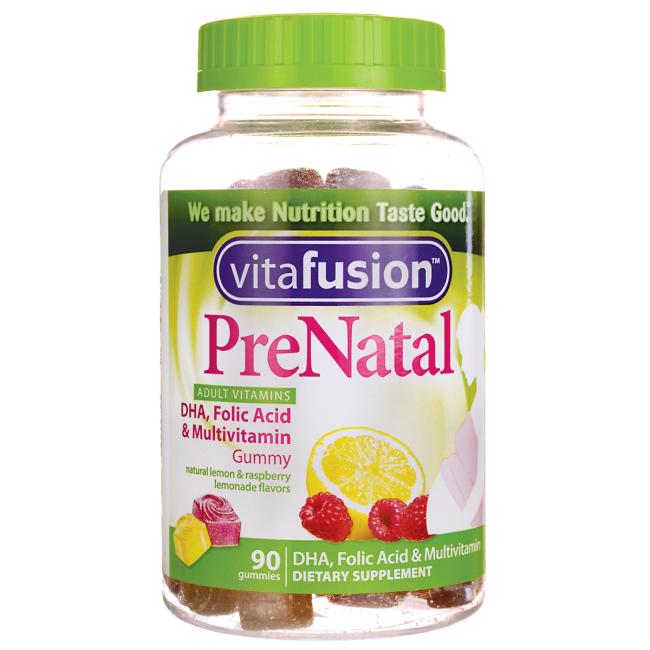
Citric acid has a pronounced sour taste and is a food additive labeled E330.
Properties of citric acid
Of course, such large volumes of production indicate a high level of demand for this product. And this is due, first of all, to its properties. Citric acids are used as preservatives and flavor enhancers.
The scope is quite wide:
Where citric acid is containedIn the food industry - to enhance and diversify the taste, in the production of:
- marmalade;
- ice cream;
- cakes;
- cakes;
- caramel;
- wines;
- cheeses;
- various drinks;
- margarine;
- sausages.
Used as a safe and non-toxic preservative in the manufacture of baby food:
Use of citric acid- juices;
- fruit and vegetable purees;
- canned meat;
- in dairy-free cereals.
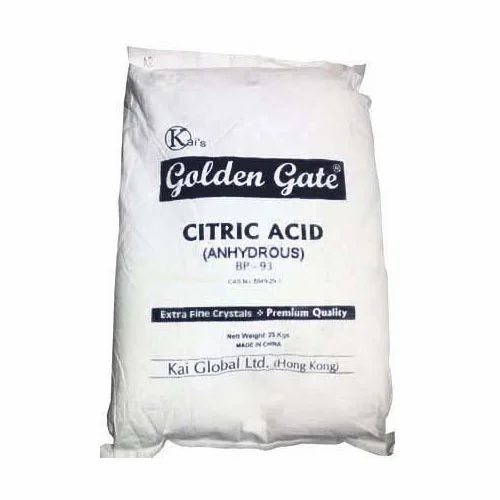
In the production of cosmetics - helps to restore and regenerate the skin, as well as to provide foaming, used as an additive in:
- creams;
- lotions;
- shampoos;
- hair balms.
Benefits and harms
Citric acidSeeing preservative E-330 in baby food, do not be afraid - this is one of the most harmless synthetic components, it will be much worse when it contains palm oil or sugar.
Citric acids are produced by the body and independently, they are necessary for the implementation of metabolic reactions for the oxidation of proteins, carbohydrates and fats. Acids convert them into water and carbon dioxide. Thus, citric acids take part in all metabolic processes and reactions of the body.
In cosmetics, including baby creams, this substance is added to ensure cellular respiration, bacteria are neutralized due to citric acids, elasticity is improved and the skin is restored. That is why this component is an indispensable component of baby diaper cream.
That is why this component is an indispensable component of baby diaper cream.
Such a wide scope of citric acid and great benefits for the body, both adults and children, does not mean at all that you can eat this product with spoons. Yes, this will not work, because lemon powder is very concentrated. There are certain daily norms for the consumption of this substance:
- for children - up to 66 mg per 1 kg of weight;
- for adults - up to 120 mg per 1 kg of body weight.
It should be borne in mind that citric acids are present in different products, and the consumption rate is a total value, so you should be extremely careful, especially when compiling a children's menu. If possible, exclude foods with a high content of preservatives, including E-330:
Health benefits of citric acid- carbonated sweet drinks;
- candy;
- marmalade;
- sausages;
- canned fish and meat.
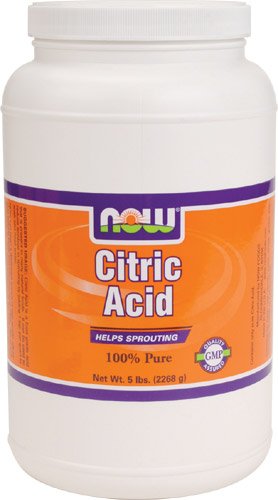
Excess acid can interfere with the body's absorption of trace elements useful for life, and also leads to irritation of the gastric mucosa (resulting in severe cutting pain). If the daily allowance is exceeded, an allergy may occur. This is more likely to affect young children whose immunity has not yet been formed. It will be quite difficult to identify the cause, since these acids are found in almost all baby food.
Often, citric acids are used for domestic purposes, for example, for cleaning scales in a kettle. It is dissolved in large quantities in water, put on fire and brought to a boil. As a result of half an hour of boiling, the scale disappears from the walls. After such cleaning, it is necessary to thoroughly rinse the kettle so that there is no trace of citric acid left, since drinking water with residues of the substance can be extremely unsafe. Vomiting, coughing, irritation of the mucous membrane of the respiratory tract and the gastrointestinal tract can be provoked.
Use and addition to food
Strength of acidsCitric acid is practically not used to prepare children's food at home. Preservation only to replace vinegar, but also added to jams and fruit jams to enhance flavor. To get a substitute for vinegar, you can dilute one tablespoon of citric acid in 100 ml of warm water; it does not dissolve well in cold water.
Often added when making homemade mayonnaise, just a little bit - a few grains - to extend the shelf life.
But children under 3 are not recommended to eat canned food - only fresh or frozen. Mayonnaise, jams and jams - only in limited quantities.
If you restrict your child from eating these foods, you don't have to worry about citric acid poisoning. But if the baby accidentally ate lemon powder or drank a solution, then you need to urgently provide first aid.
Professional advice
In order to avoid an allergy to citric acid, it is necessary to monitor the child's diet. If possible, avoid store-bought fruit purees and canned meats. It's so easy to do it yourself.
If possible, avoid store-bought fruit purees and canned meats. It's so easy to do it yourself.
And if poisoning occurs through negligence, then you need to quickly neutralize the effect of the acid. It is good in this case to give the child a drink of milk. It is advisable to quickly induce vomiting with plenty of clean water. Next, look at the child’s well-being: if after a couple of hours the condition has returned to normal, then you should not worry, but you need to make sure that allergies do not appear.
Allergy to citric acid is not treated, only its external manifestations can be removed:
- skin redness;
- itching;
- small rashes;
- sometimes swelling of the mucosa.
If you are allergic to citrus fruits, then you need to be careful with citric acid. Although their origin is different, but the effect on the body is the same.
Allergies in children can occur to different foods.


